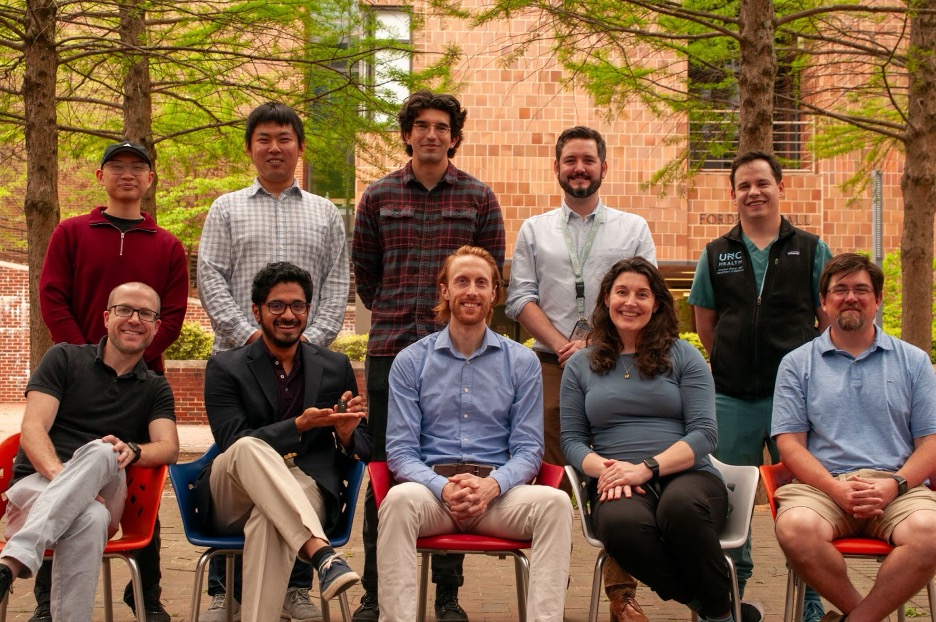UNC Researchers Receive Grant to Test Blood Oxygen Device for Patients of Color
A team of UNC researchers from the Department of Applied Physical Sciences, School of Medicine and Gillings School of Global Public Health has received a $110,000 grant to conduct a two-year clinical trial on a pulse oximeter that would improve the accuracy of blood oxygen saturation measurement in patients of color.
The project, called MABOS (Melanin-Adjusted Blood Oxygen Sensor), aims to address the observed racial bias in pulse oximetry by developing a device incorporating a third wavelength of light designed to adjust the measurement of oxygen-saturated hemoglobin, or SpO2, based on the presence of melanin, a pigment found in the skin that varies in concentration among individuals with different skin tones.
“The project’s ultimate goal is to address the racial bias in pulse oximetry and improve the overall accuracy of blood oxygen saturation measurement, thereby potentially reducing delays in treatment and improving patient outcomes,” said Wubin Bai, a principal investigator of the team and an APS assistant professor.
Funded by the North Carolina Biotechnology Center, the project is currently in the prototype development stage, with plans to validate the device’s performance through in-vitro and clinical tests. Arjun Putcha, the lead inventor of MABOS and an APS materials science Ph.D. student, said the key algorithm modifications proposed in MABOS will provide a robust methodology to reduce pulse oximeter inaccuracy in patients of color.
Pulse oximeters typically use two wavelengths of light to measure oxygen saturation levels in the blood based on the principle of spectrophotometry, a technique used to measure how much a chemical substance absorbs light. By using two different wavelengths of light, typically red and infrared, pulse oximeters can differentiate between oxygenated and deoxygenated hemoglobin, which is the protein in red blood cells responsible for carrying oxygen.
“The addition of a third wavelength of light enhances the performance and versatility of pulse oximeters, making them more reliable and clinically useful tools for monitoring oxygen saturation in various healthcare settings,” said Kevin Schichlein, an investigator on the team and a Ph.D. student in the Center for Environmental Medicine, Asthma and Lung Biology.
The research team has finalized the first MABOS prototype and is conducting a preliminary safety clinical trial. Following this trial, they plan to incorporate feedback into another round of prototyping.
“Today’s oximeters have been shown to be inaccurate at low oxygenation levels for patients of color,” said Rob Lampman, clinical investigator of the team and an assistant professor of medicine. “Through the use of our algorithm incorporating melanin concentration in the calculation of SpO2, we believe our device can be more accurate even at lower oxygenation levels.”
Other contributors to the research include Jonathan Blohm of the Department of Medicine; Ashmita Chatterjee and Jessica Guidici of the Division of Hospital Medicine; Kenton Dover, Julie Nguyen and Benjamin Sines of the Division of Pulmonary Diseases and Critical Care Medicine; Ilona Jaspers of the Department of Pediatrics in the Division of Allergy, Rheumatology, and Immunology; Michael Kosorok of the Department of Statistics & Operations Research; Duncan McLean of the Department of Anesthesiology; and Tien Nguyen and Hannah Weisbecker from Department of Applied Physical Sciences.

The research was conducted by a multidisciplinary team of UNC engineers and clinicians. Sitting left to right: Kenton Dover, Arjun Putcha, Benjamin Sines, Jessica Guidici and Rob Lampman. Standing: Tien Nguyen, Wubin Bai, Kevin Schichlein, Duncan McLean and Jonathan Blohm.

